It’s common for the company to manage a large amount of information but fail when it comes to its proper processing. In this situation, many business managers rely on the efforts and soft skills of their team.
But the most effective way to not only maintain but also expand interchanging of information within your organization is to implement software enterprise application integration. With this know-how, you gain access to easier distribution, scaling, and adaptiveness of data.
Though sounding promising and simple-to-use, this instrument still requires specific knowledge and attentiveness to be adopted. In this post, we’ll reveal all the peculiarities, challenges, and opportunities such innovation can bring to your business.

What Is Enterprise System Integration?
Generally, enterprise system integration deals with various types of corporate data. For a company, that’s not news that information should be managed: each knows and adopts some of its integration elements.
In particular, it’s common to introduce programs like Customer Relationship System (CRM) or some specific accounting software. Nevertheless, comprehensive integration means taking a sophisticated approach to work with all the internal processes under one system.
Within each business, there are numerous informational data layers to handle. And the bigger the company, the greater extent this problem gets. Here, the enterprise system integration can help reduce the data complexity and multiply the connections within the information field.
In practice, integration as a service provides your team with a full-fledged platform (titled iPaaS) to input, interchange, and process the corporate information. Since it serves so many purposes, enterprise system integration requires proper technical training to be implemented by your company.
What Is Enterprise Application Integration Software?
Automated and scalable enterprise system integration requires software building. To cope with data complexity, companies incorporate sophisticated sets of technologies — including various messaging platforms, application connectors, data streams, integration patterns, and programming interfaces.
If applied well, enterprise application integration software minimizes the risk of communication bias. In other words, it prevents cooperation ineffectiveness and inability to automate critical processes.
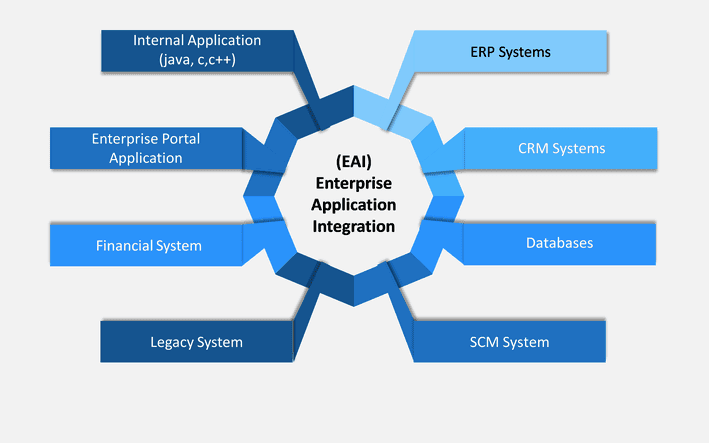
The key challenge of enterprise application integration software is its complexity. This technology started as a series of point-to-point connections and evolved into the centralized model. First, it was connected through an enterprise service bus (ESB). But now, many businesses turn to cloud technologies.
APIs and Cloud-native Enterprise Integration Software Architecture
These days, enterprise integration software commonly works as the network of APIs that together form a cloud-native app.
API, or application programming interface, is the piece of code that facilitates interactions with information. Within this service, all the technical work on creating a point-to-point connection happens.
In particular, API serves as a reusable portal that helps in demanding information, keeping code, and managing information flow. With multiple APIs, system integration becomes possible.
Furthermore, Agile and DevOps methodologies are used to create cloud-native app architecture. With this measure, you can collect several microservers, which are effective separately yet independent combined.
Thanks to it, your enterprise integration software will be able to maintain all the processes — including feedback collection, business acceleration, and optimization of core operations. And Big Data (meaning the size and variety of data sources) is no longer a challenge for your company.
Four Advantages of Enterprise Software Integration
In general, the properly introduced enterprise integration software creates the ready-to-use framework for information interchange. The primary purpose of this technological enhancement is to establish the all-inclusive information realm.
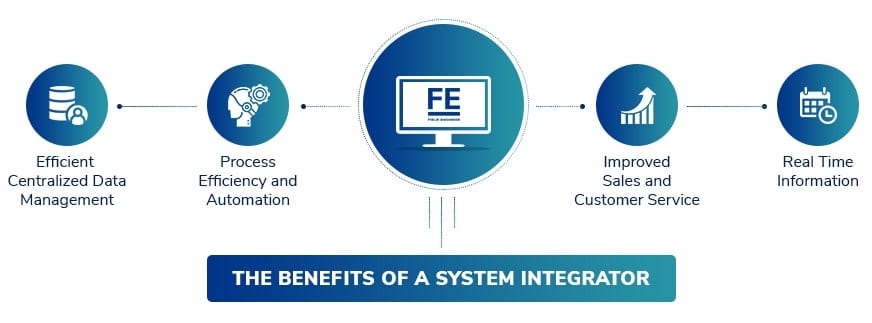
Well-established enterprise application integration of software serves four aims at once:
- Organize internal coordination. Introducing software integration significantly facilitates the ability of your team to cope with huge data sets. Moreover, the departments get easy-to-use and understandable samples for information exchange,
- Facilitate building products. The communication on products gets easier after introducing integration software. You can get instant updates and lead product negotiations within the system,
- Digitalize all the information flows within the enterprise. The system integration helps to transfer all the existing communication and information exchange to the unified digital platform,
- Distribute the computing environments. Enterprise software integration introduces a significant level of architecture standardization. In practical terms, it creates an automated system of information exchange that helps you concentrate on strategic aims and secure the effectiveness of internal processes management.
The top 5 examples of enterprise application software
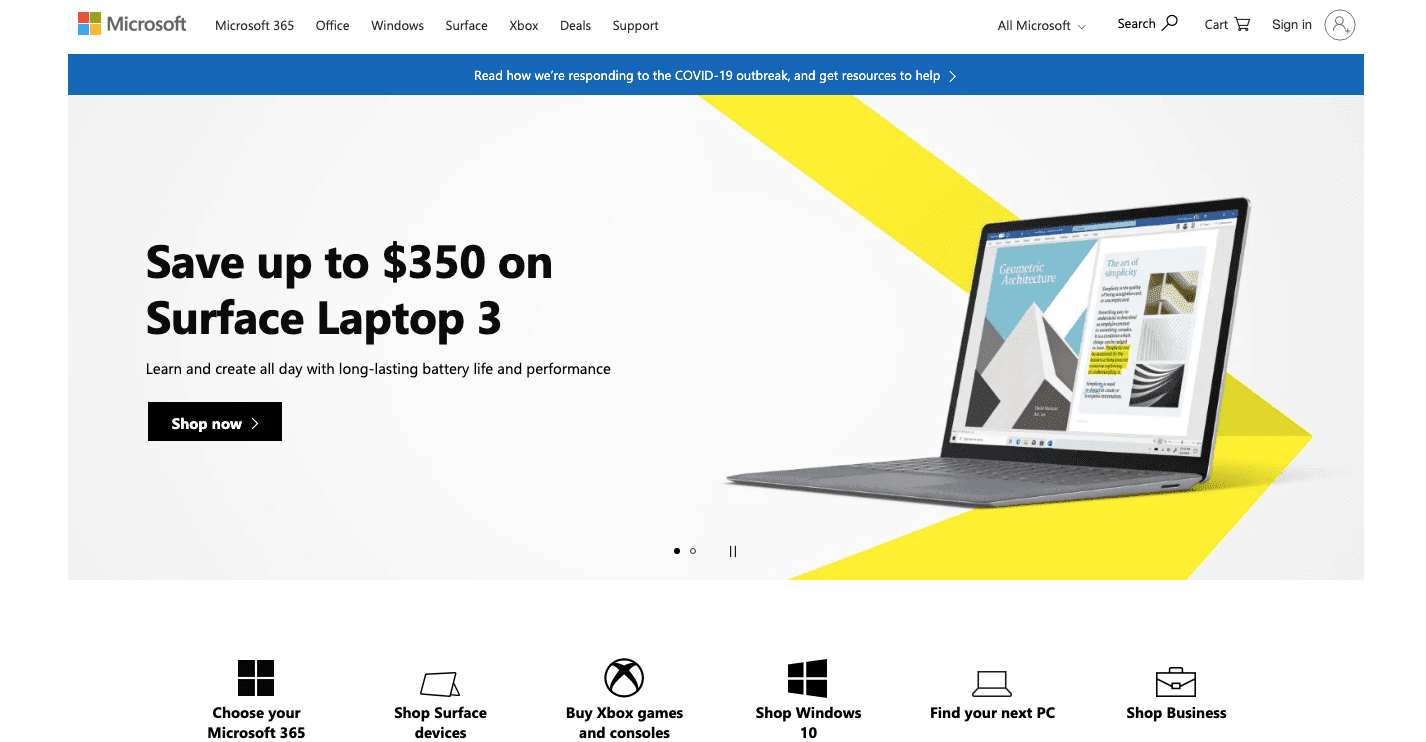
Microsoft, the powerful brand name that offers traditional tools for integration software
As the major player in the digital market, Microsoft has caught the trend and recently developed cloud technology for enterprise integration. Nevertheless, the company is better known for its SQL Server, along with two SaaS products: Azure Logic Apps and Microsoft Flow.
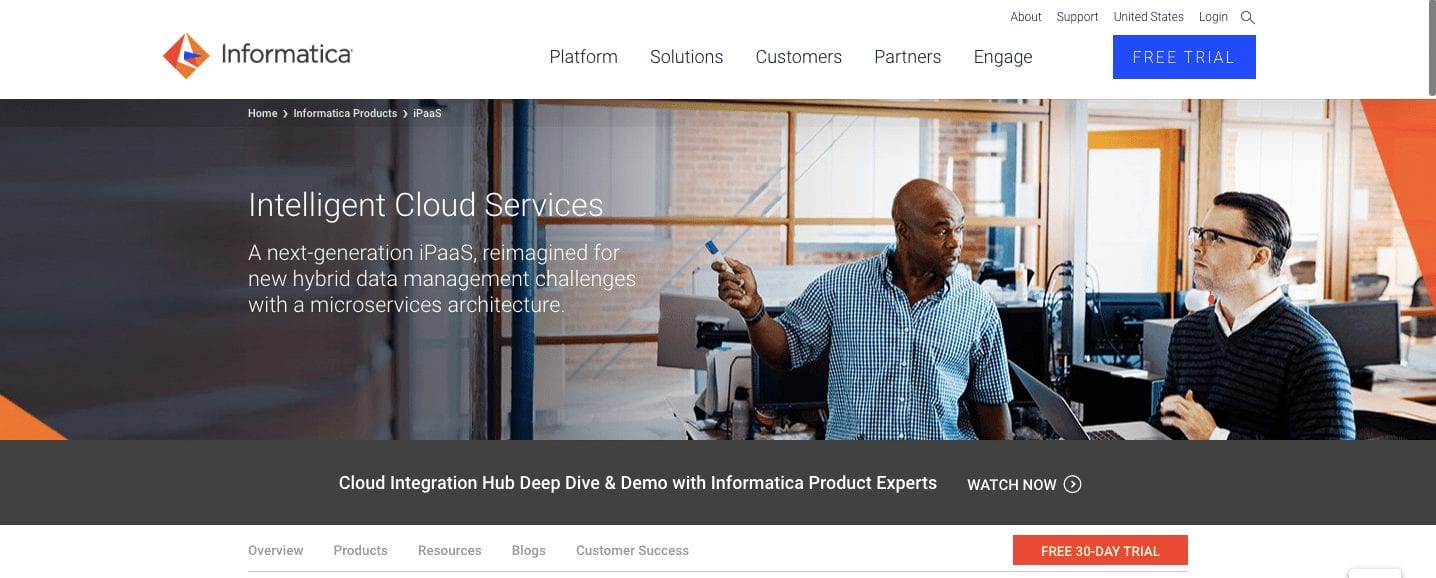
Informatica, the key competitor of Microsoft
Offering intelligent cloud services, Informatica is one of the best tools for enterprise integration. It offers both on-prem and cloud deployments, making it possible to create centralized and hybrid governance over your corporate information.
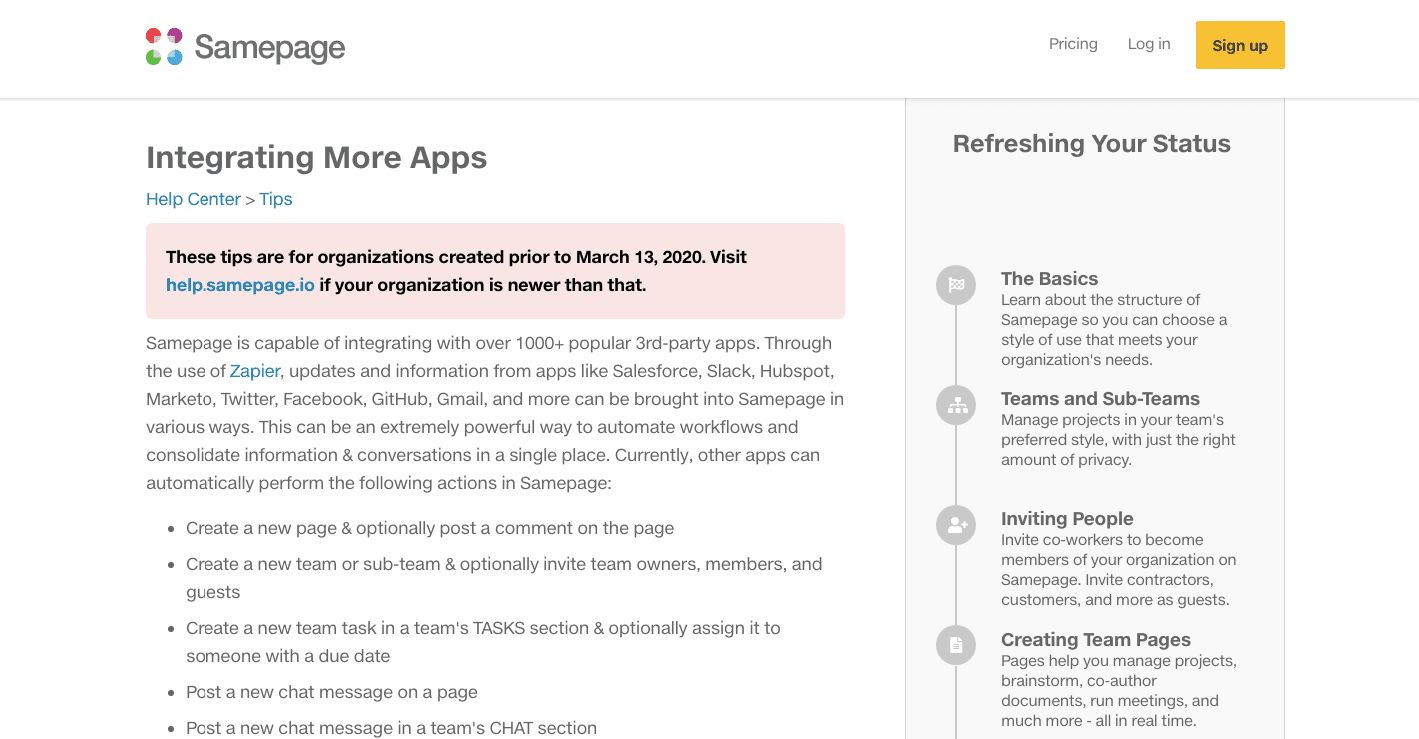
Samepage, an award-winning enterprise application integration software
Samepage is the application that has everything needed for successful cooperation. It includes chatting and calling platforms, task management, and real-time collaboration on doc files. If you need a platform that unites all your working chats and apps within one tool, Samepage will help you.
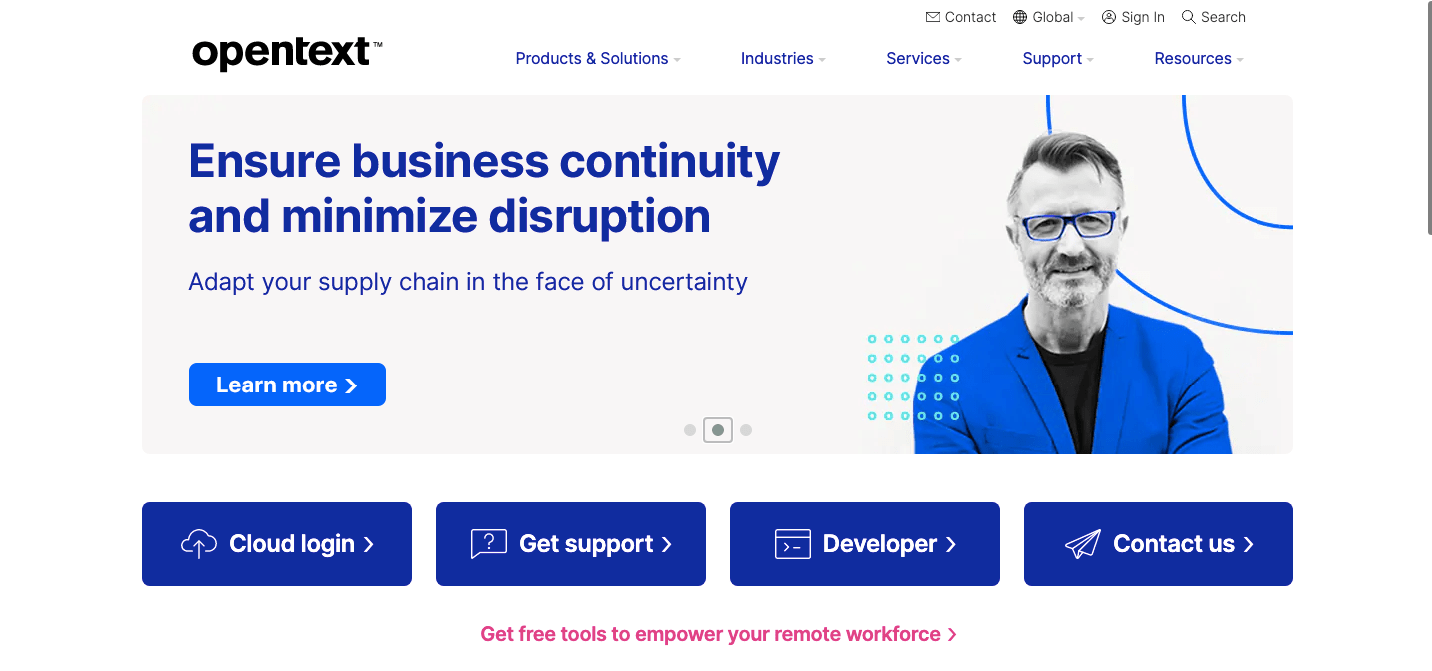
OpenText, the best B2B integration software
OpenText is the tool specially designed for maintaining key operations connected with B2B activities. In particular, the integration software supports B2B transactions on a global scale through various managing services, cloud solutions, and SaaS applications.

Intellectsoft, the boutique digital transformation consultancy and software development company
Providing the full complex of cutting edge engineering solutions, Intellectsoft can provide the entire software foundation for integrating your business. With our service, you will get a reliable complex of programs that are effectively interconnected with one another. And so, you’ll get great service on a turnkey basis.
The Best Way to Scale Enterprise Software Integration
Even though enterprise application software integration promises many advantages to the business, it can bring problems too. As a precaution, protect yourself from system asynchronization resulting from incompatible data models.
Remember: software integration should always serve your business.
Thus, choose only tools that will work the best in your case. Others may consider some programs asynchronous and improper, but they may become the greatest technological achievement for your company. Because of that, you should always put yourself first.

There are some grounding principles of enterprise software integration, though. To scale your business and save on integration, start program implementation wisely. On the one hand, you can establish it through directly calling the API and making the system transform the occurring data into an understandable response. This approach is titled “tightly coupled system integration.” Though pretty understandable, it’s too conservative and requires extra time and effort to update the system even slightly.
On the other hand, you can use service-oriented architecture. It has greater flexibility due to the loose coupling that doesn’t allow the change in one place to affect the entire system. Thanks to this, you get a highly compatible and easily switching system to scale.
Anyway, the real advantages of a chosen approach become evitable only after months of usage. In the end, it all depends on your particular processes and business tasks. Thus, we recommend carefully choosing the service provider to secure the smoothing of the integration process.
We, at Intellectsoft, empower companies and their workforce with cutting-edge transformative solutions and data-driven insights. Are you and your organization ready to shift the mindsets and get the most out of innovations?
Talk to our experts on enterprise software development and find out more about the topic and how your business or project can start benefiting from it today!